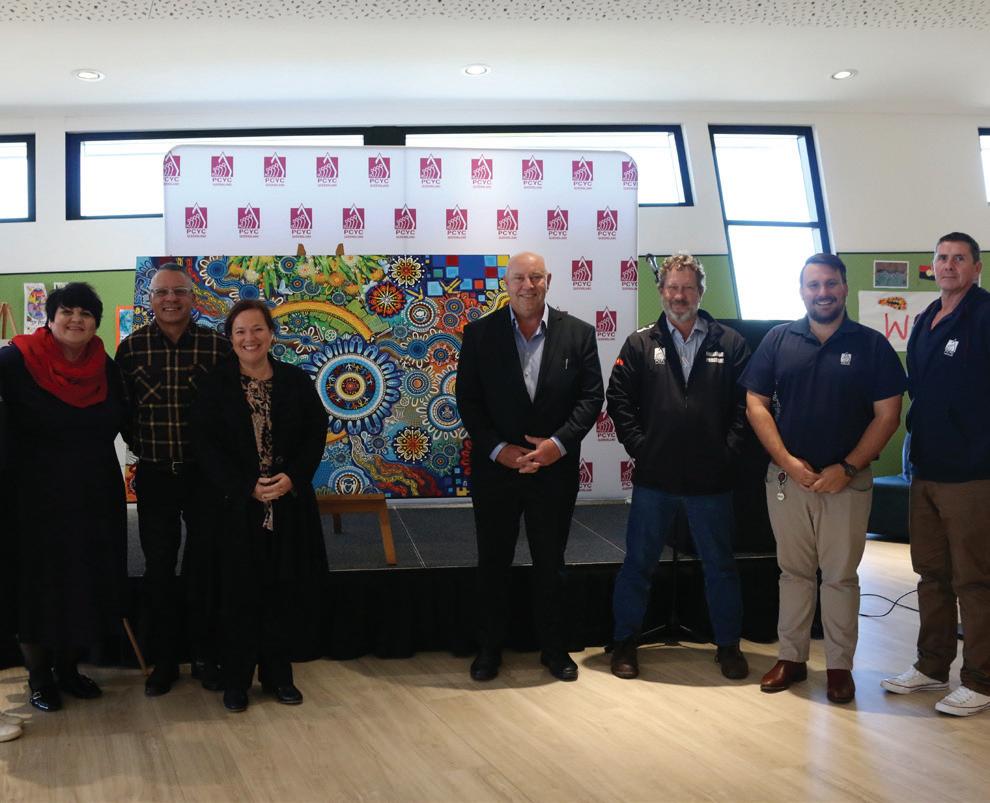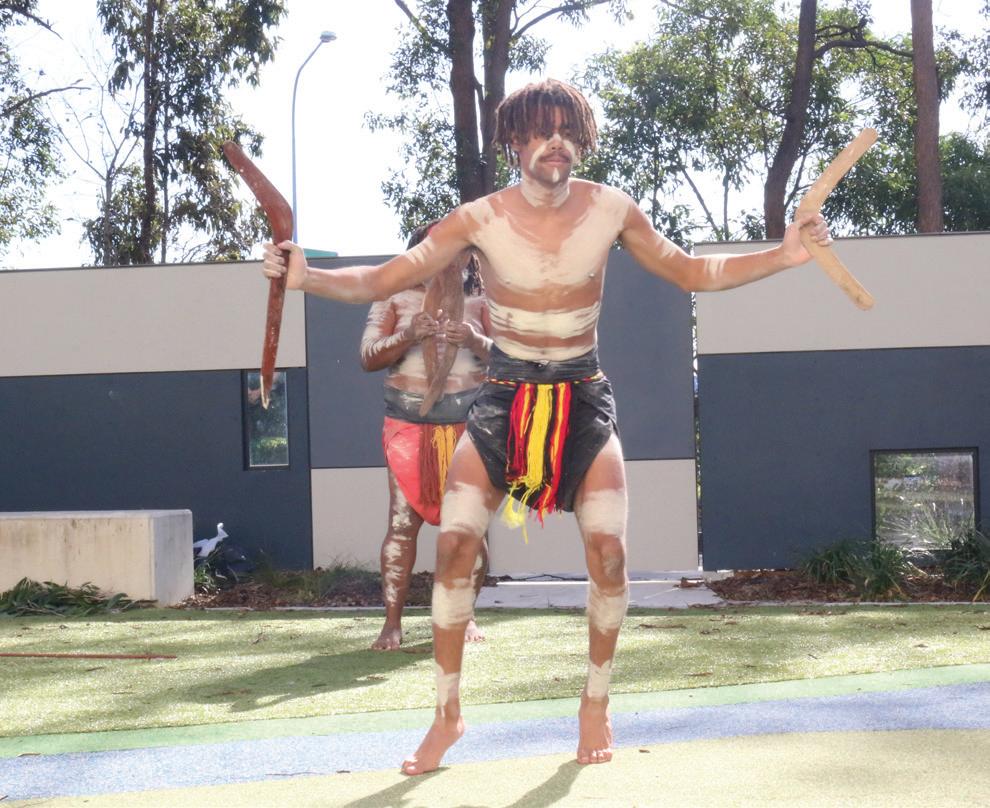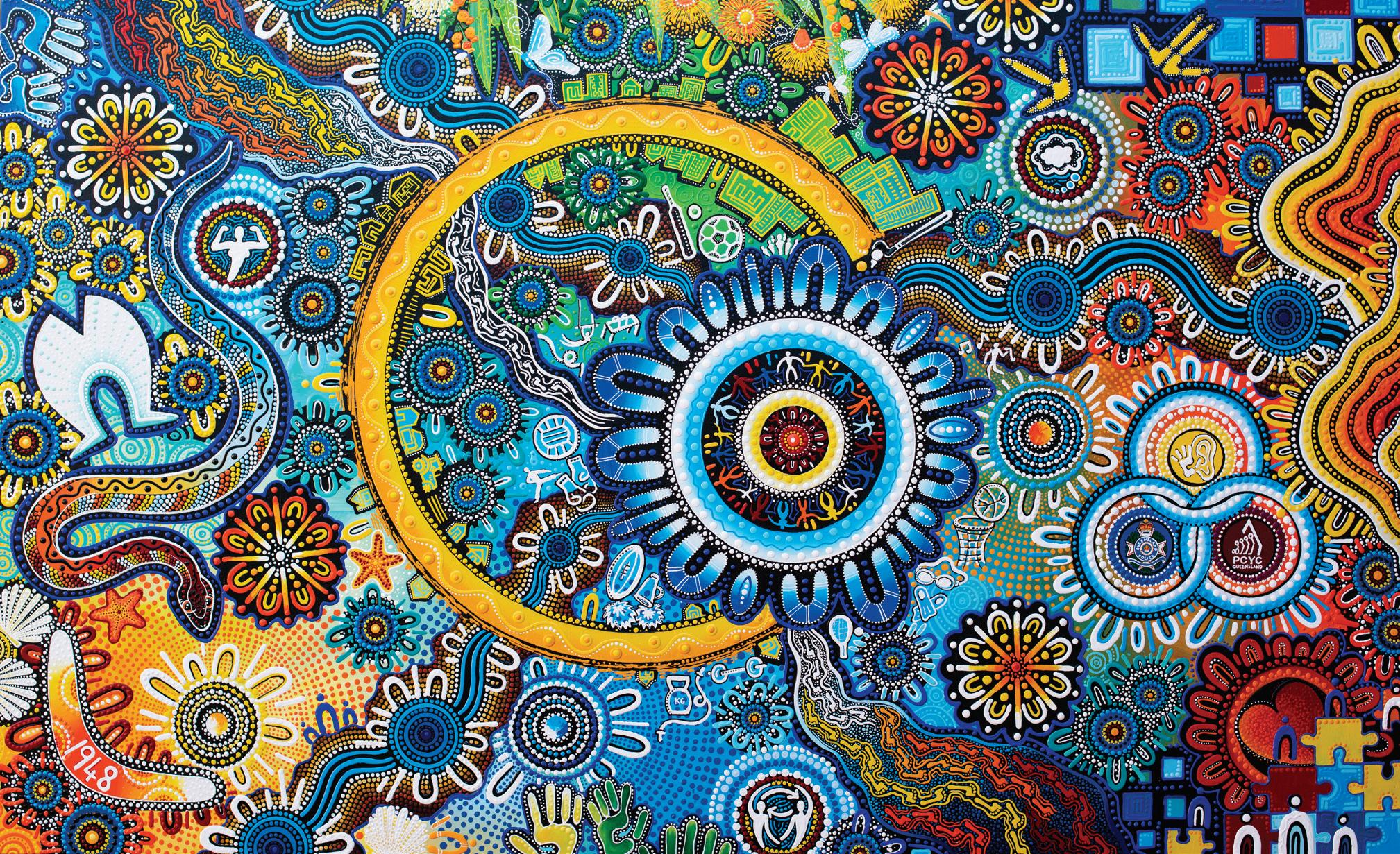
2 minute read
Reconciliation Action Plan
PCYC Queensland’s first Reconciliation Action Plan, has been officially accredited by Reconciliation Australia. For more than 20 years PCYC Queensland has actively engaged with First Nations Peoples, to establish community-based services and activities to support young people.
Our Indigenous Programs Development Unit was established in 2013, and the team continues to drive targeted services for First Nations Peoples to provide access to a range of sporting, recreational, and cultural activities that encourage physical, social, and emotional wellbeing - as well as delivering responsive community-led programs and services to support and build capacity throughout Queensland’s most disadvantaged areas in the country - such as Woorabinda, Yarrabah, Napranum and Palm Island.
Advertisement
In the development of our RAP, PCYC Queensland engaged in state-wide community consultations to better understand how we can show leadership in our communities, and what our communities expect from us as partners in Reconciliation.
Through this consultation, we were able to capture our intentions and the communities’ expectations, helping us to form the basis of our Reconciliation Action Plan.
Through the development of our RAP, PCYC Queensland is committed to strengthening and growing our Indigenous Programs Development Unit who will continue to work to deliver responsive community-based programs and develop mutually beneficial relationships with Aboriginal and Torres Strait Islander stakeholders.

This work has already begun with an exciting partnership with the Alive Project to deliver a mental fitness and resilience program to PCYC staff from Rockhampton and Woorabinda.
The project will also include Alive’s Train the Trainer program, which provides extra capacity building support to the community by educating staff how to continue mental health support and suicide prevention.
As a celebration of PCYCs commitment to a reconciliation journey a RAP artwork was commissioned by Queensland Artist Chern’ee Sutton.
PCYC Queensland has a long history of working together to create pathways for young people in community. The large community symbol in the centre represents the organisation’s holistic approach of working closely with Aboriginal and Torres Strait Islander communities to achieve physical (strong woman), social (two people communicating) and emotional (thought bubble) wellbeing outcomes and create opportunities for young people.

The white silhouettes around the community symbol represent some of the organisation’s sports and recreational activities such as gymnastics, martial arts, boxing, basketball, gyms and more. The large yellow circle surrounding this is the sun, highlighting the opportunities created for young people as well as the brighter future that PCYC Queensland creates for youth and community members from all regions and walks of life in remote, regional, and urban communities.
The footprints leading from the centre show the organisation’s history of walking together side by side with community. The blue travelling lines surrounded by brown dots and white people symbols illustrate PCYC Queensland travelling around the state to ensure that community is cared for.
The three interlocked community symbols portray the mutual trust created between PCYC Queensland, QPS and the community, with the handprint and ear representing listening to community. The puzzle pieces, heart and people represent the organisation’s vision of building safer, healthier communities through youth development, and the matching squares in the top right corner tie into the organisation’s foundation asset, showing diversity and inclusiveness, and a visual connection to QPS.
The kangaroo and emu footprints represent the Indigenous programs, which like the animals are always moving forwards and never backwards. The five stars symbolise PCYC Queensland’s values of Respect, Leadership, Commitment, Passion and Teamwork. The handprints around the edge show the support that staff, volunteers, and police officers provide for the community, and the white and yellow dotted circles in the background represent the three pillars of youth development, crime prevention and community engagement.
The boomerang in the bottom left corner highlights the returning volunteers, staff and community members who have been working with the QPS since 1948. The rainbow serpent and Dhari represents Aboriginal and Torres Strait Islander culture, history and connection to country, which has been a part of our lands for over 65,000 years. And the community symbols represent the Aboriginal and Torres Strait Islander communities which PCYC Queensland works with across many diverse landscapes and environments from the coast, bush and rainforests, desert and outback and beyond.









